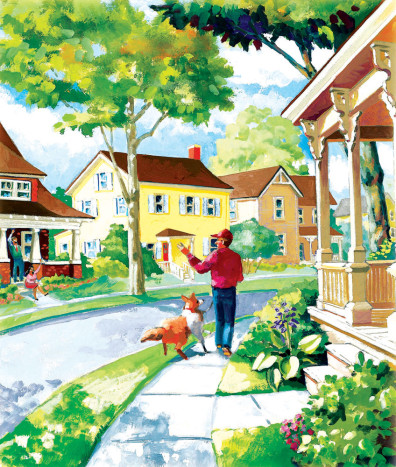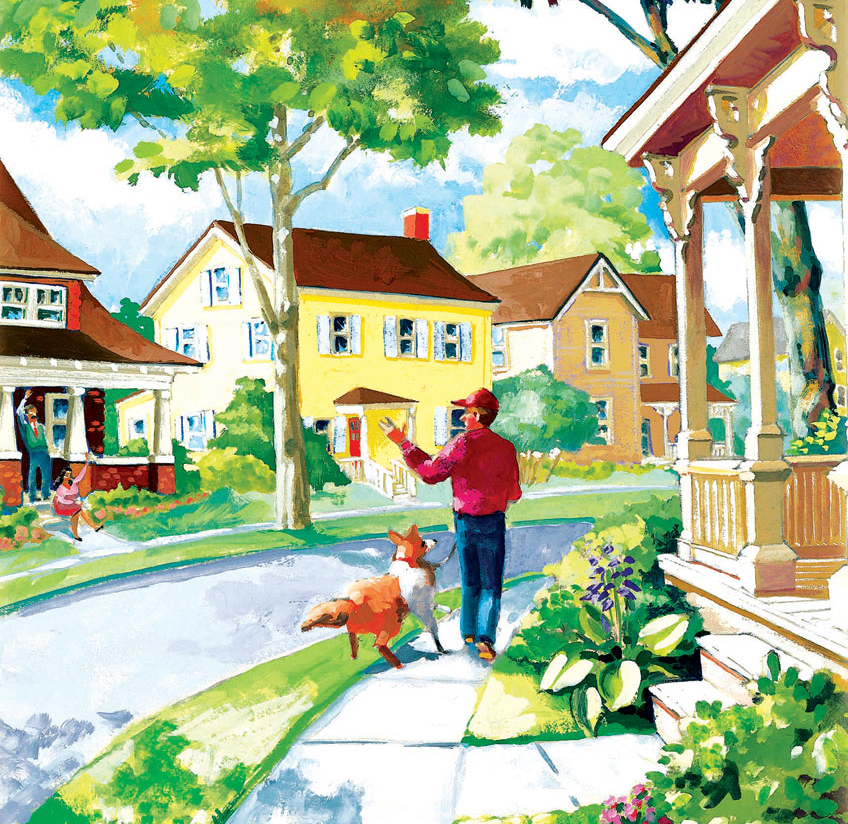The Green Book was written in the early 1990s as a plan for the re-development of the 4,700-acre abandoned Stapleton International Airport. Through the multi-year efforts of the Stapleton Redevelopment Foundation, community advocates, and the City and County of Denver, The Stapleton Development Plan (its formal name) was approved by unanimous vote of the Denver City Council in March 1995 and made part of the Denver Comprehensive Plan. It is referred to as the Green Book because it was printed with recycled paper and a green cover.
The Green Book, in the ‘90s, was widely considered a visionary, cutting-edge plan with its emphasis on sustainability and new urbanism. Key features include a network of urban villages laid out in a grid re-connecting the property to surrounding neighborhoods in Denver and Aurora. The high plains landscape, obliterated by the airport, was to be restored with parks and open space doubling as drainage ways that traverse the site—resulting in a development that is nearly one quarter parks and open space.

This rendering, printed in the third issue of the Front Porch in fall 2000, shows “different architectural treatments that create varied and memorable streetscapes reminiscent of Denver’s most attractive neighborhoods.” The photo at right, taken in 2006, shows the outcome was remarkably close to the vision. Illustration courtesy of Forest City Stapleton Inc.
The plan contemplated a development that would accommodate 31,000 jobs and 25,000 residents. Large, single-use districts were to be avoided while a mix of uses, vertically and horizontally, was to be encouraged. The plan emphasizes the “bones” of infrastructure, i.e., major roadways, utilities, drainages, urban design, more than specific uses. The goal was to create the right balance of certainty and flexibility over the anticipated 30- to 40-year build-out.
The Green Book also articulates lofty social and economic goals, seeking walkability, a jobs/housing balance, and a live/work/play lifestyle. It encourages diversity (age, income, race, ethnicity, housing prices and styles) while emphasizing the need to attract middle- and high-income families back to the city. It sought to stimulate reinvestment in surrounding neighborhoods through its own development, the creation of quality schools, and on-site job training opportunities.
The plan also recommended that a non-profit corporation manage the site and the redevelopment project. The board would be appointed by the Mayor and Denver Urban Renewal Commissioners and confirmed by the Denver City Council. City Council approved the formation of the Stapleton Development Corporation (SDC) in April 1995 and SDC continues to carry out the role described in the Green Book.
It has now been 20 years since the book’s conception. How did Stapleton turn out? Did it meet the vision of the Green Book? Read here.


It turned out great, all the way up until the moment the MCA decided to change the name of the neighborhood despite the neighborhood vote against the name change that happened in 2019.